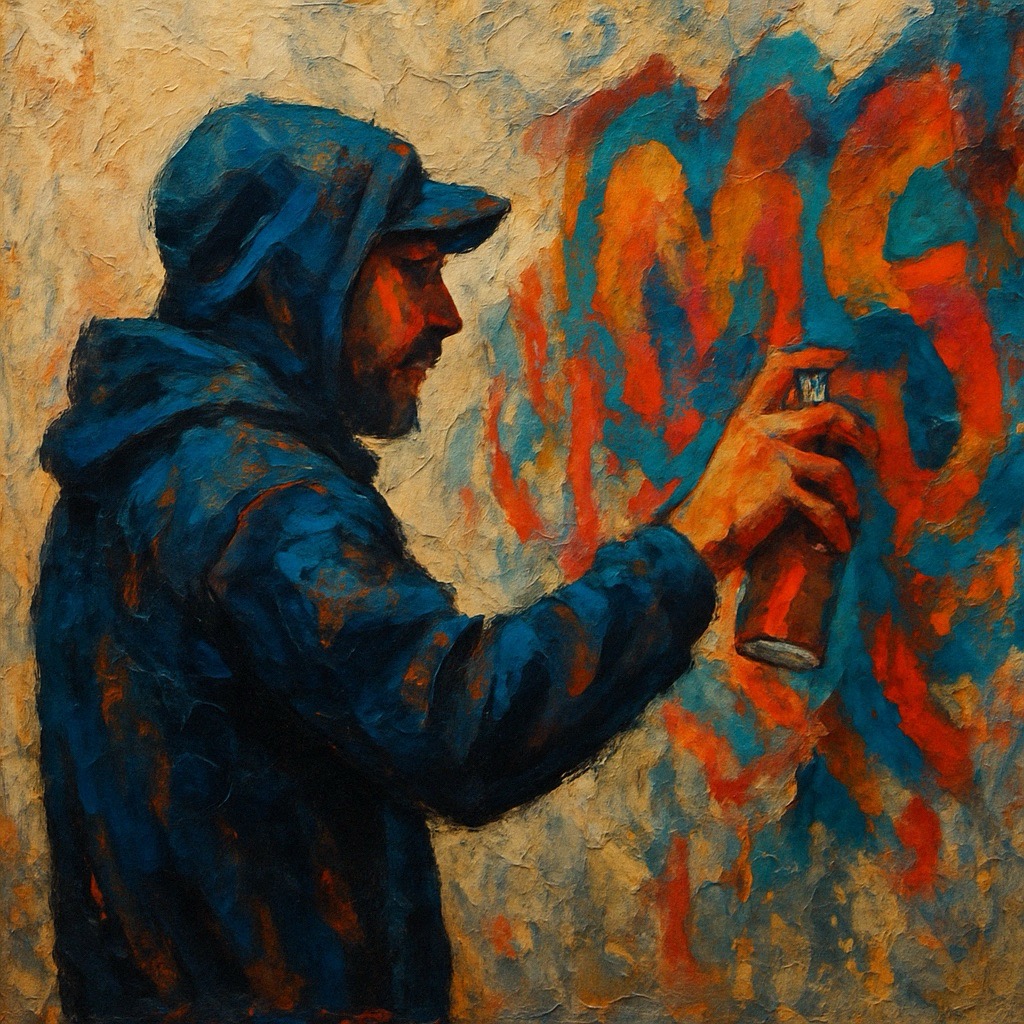Ilustración: Juan Esteban
EL DILEMA ENTRE LAS CALLES Y LOS MUSEOS
El arte urbano, surgido como una forma de expresión libre y desafiante, ahora se encuentra en una encrucijada legal y cultural: ¿Qué pasa con los derechos de autor cuando estas obras se trasladan de las calles a las galerías? ¿Cómo protegemos el mensaje original de los artistas sin desvirtuar su contexto?
LA AUTORÍA EN EL ARTE URBANO
En el arte urbano, el anonimato y las colaboraciones colectivas son la norma, lo que complica la atribución de autoría. Un caso conocido es el de Banksy, cuya identidad desconocida lo ha llevado a enfrentarse a problemas legales en Europa. Otro ejemplo es Invader, cuyo arte en mosaico ha sido replicado y vendido sin su consentimiento, cuestionando la delgada línea entre homenaje y plagio.
DERECHO MORAL E INTEGRIDAD DE LA OBRA
Cuando un mural callejero se traslada a un museo, a menudo se pierde el contexto original, poniendo en peligro la integridad de la obra y el derecho moral del artista. Por ejemplo, Shepard Fairey demandó a los responsables de mover y vender su mural en Detroit sin su aprobación. Este caso plantea preguntas sobre cómo proteger la reputación artística en entornos tan distintos.
LA LIBERTAD DE PANORAMA Y SU IMPACTO
Si bien la libertad de panorama facilita la difusión de imágenes de obras en espacios públicos, también genera conflictos. En Bélgica, un colectivo de artistas limitó el uso comercial de sus murales, protegiendo así sus derechos económicos. Este debate muestra cómo equilibrar la difusión del arte con el respeto a los derechos de los creadores.
LA NATURALEZA EFÍMERA DEL ARTE URBANO
El arte callejero es efímero por naturaleza. La demolición de 5Pointz en Nueva York provocó una indemnización histórica para los artistas afectados, mientras que en Bolonia, Italia, Blu borró su propio mural como protesta contra su comercialización. Estos casos subrayan la necesidad de encontrar un equilibrio entre preservación, respeto y derechos.
El arte urbano no solo adorna nuestras ciudades; también es un recordatorio de las luchas y derechos de quienes lo crean. ¿Cómo crees que podemos proteger la esencia del arte urbano mientras respetamos los derechos de autor?
THE DILEMMA BETWEEN THE STREETS AND THE MUSEUMS
Urban art, born as a free and defiant form of expression, now finds itself at a legal and cultural crossroads: What happens to copyright when these works move from the streets to the galleries? How can we protect the original message of the artists without distorting its context?
AUTHORSHIP IN URBAN ART
In urban art, anonymity and collective collaborations are the norm, making attribution of authorship challenging. A well-known case is Banksy, whose unknown identity has led to legal troubles in Europe. Another example is Invader, whose mosaic art has been replicated and sold without his consent, raising questions about the fine line between homage and plagiarism.
MORAL RIGHTS AND WORK INTEGRITY
When a street mural is relocated to a museum, the original context is often lost, endangering the work’s integrity and the artist’s moral rights. For instance, Shepard Fairey sued those responsible for moving and selling his mural in Detroit without his approval. This case raises questions about how to safeguard artistic reputation in such different environments.
FREEDOM OF PANORAMA AND ITS IMPACT
While freedom of panorama facilitates the dissemination of images of works in public spaces, it also generates conflicts. In Belgium, a collective of artists restricted the commercial use of their murals, thereby protecting their economic rights. This debate illustrates how to balance art dissemination with respect for creators’ rights.
THE EPHEMERAL NATURE OF URBAN ART
Street art is ephemeral by nature. The demolition of 5Pointz in New York resulted in a landmark compensation for the affected artists, while in Bologna, Italy, Blu erased his own mural in protest against its commercialization. These cases highlight the need to find a balance between preservation, respect, and rights.
Urban art not only decorates our cities; it also serves as a reminder of the struggles and rights of its creators. How do you think we can protect the essence of urban art while respecting copyright laws?



